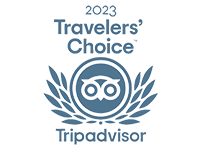What to Do in Ha Giang? Ha Giang is emerging as a must-visit destination in Vietnam for adventure enthusiasts. Are you planning a successful trip to Ha Giang but wondering about its location, how to get there, and the best time to explore this northeastern province of Vietnam? Whether you’re considering using a local travel agency in Ha Giang, such as Autour Asia, or planning to experience the famous Ha Giang loop independently, this travel guide provides all the essential information. Discover the top things to do in Ha Giang to make the most of your journey!

Ha Giang travel guide
- I. Where is Ha Giang? When to visit to Ha Giang?
- II. How to get to Ha Giang? How to drive in Ha Giang?
- III. What to eat in Ha Giang? What are the specialties in Ha Giang? Cuisine & coffee in Ha Giang
- IV. Where to stay in Ha Giang? Top accommodations in Ha Giang
- V. What to see in Ha Giang? Things to do and see in Ha Giang
- VI. Shopping, souvenirs in Ha Giang
- VII. Useful information and customer experiences when traveling to Ha Giang
- VIII. FAQ - Most Frequently Asked Questions About Ha Giang Travel
I. Where is Ha Giang? When to visit to Ha Giang?
Ha Giang is a province in northeastern Vietnam, considered a Vietnam must-visit destination for nature lovers and adventurers seeking new experiences. The most popular tourist route in Ha Giang is the “Ha Giang loop” a 350 km circular route that passes through four high-altitude districts of the Dong Van Karst Plateau Global Geopark. This scenic loop begins in Quan Ba, travels through Yen Minh, Dong Van, Meo Vac, and then returns to the starting point. The Ha Giang loop is a dream come true for adventure travelers who crave the open road. Pack your gear, charge your batteries, and get ready for an unforgettable journey with options like a Ha Giang loop private tour through a local Vietnam travel agency such as Autour Asia.
When to visit Ha Giang? Ha Giang is beautiful year-round, but the natural landscapes and climate vary with each season. If you’re planning a trip to Ha Giang, March and April offer pleasant weather for exploring the region. However, it’s also ideal to visit from January to May, in July, and from September to December.
How is the annual weather in Ha Giang? On average, the hottest months in Ha Giang are from April to September, while January and December are the coldest. The rainiest months are July and August. So, plan your Ha Giang travel with these seasonal variations in mind to make the most of your adventure!
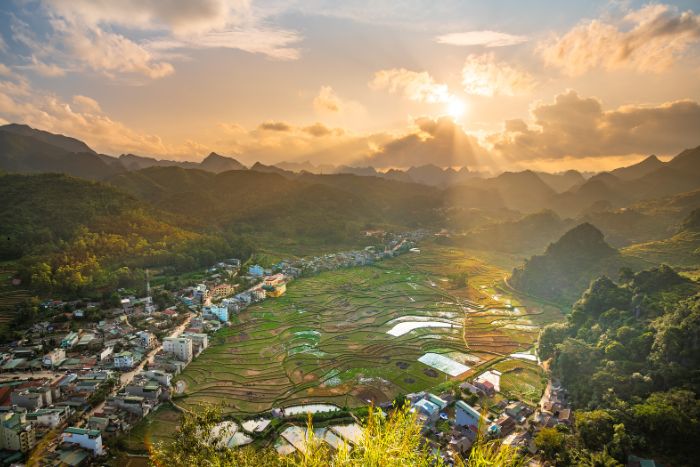
II. How to get to Ha Giang? How to drive in Ha Giang?
The distance between Hanoi and Ha Giang is 300 km. The only way to travel from Hanoi to Ha Giang is by bus or minibus—unless you have your own motorbike or book through a Ha Giang private travel agency like Autour Asia. Reliable bus companies offer tickets starting at $10, with sleeper buses available for added comfort.
Since Ha Giang has no railway or airport, the only access is by road. The nearest train station is in Lao Cai, about 200 km from Ha Giang city. Travel agencies in Hanoi can also help you arrange transport, either with a private car or by assisting you in booking bus tickets from Hanoi to Ha Giang.
For travelers in Sapa looking to continue their journey to Ha Giang, there are transport options to get from Sapa to Ha Giang. Both Sapa and Ha Giang are located in the mountainous northern provinces of Vietnam, and the distance between them is over 200 km. However, the road from Sapa to Ha Giang can be challenging due to steep passes, dangerous curves, and weather conditions that often include fog in the mornings and evenings. If you’re considering how to drive in Ha Giang, especially from Sapa, plan carefully to ensure a safe and enjoyable experience on this adventure.
Though demanding, the route from Sapa to Ha Giang is also stunning. The natural landscape is breathtaking and dramatic. There are three ways to cover the 235 km (146 miles) from Sapa to Ha Giang: by bus (5-5.5 hours), minivan (5-6 hours), or private transfer (6 hours). The journey takes between 5 and 6 hours, with the bus being the quickest option. Tickets for the minivan start at 380,000 VND (€14.40).
III. What to eat in Ha Giang? What are the specialties in Ha Giang? Cuisine & coffee in Ha Giang
Ha Giang culinary culture is one of the must-explore aspects when visiting this northeastern region. Ha Giang’s specialties are dishes made with a variety of natural ingredients found abundantly in the area. This mountainous province is rich in unique natural products unavailable elsewhere. Many traditional foods are made by the ethnic mountain communities of Ha Giang, and these have become essential parts of local life, providing a distinctive experience for visitors.
Some popular foods to try when visiting Ha Giang include banh tam giac mach (a buckwheat cake), thang co (a hearty stew made from horse, beef, or goat offal), banh cuon trung (a delicate egg-filled crepe), chao au tau (a nutritious soup made from macre root), lon cap nach (a unique small-sized pig often roasted whole), and xoi ngu sac (a beautiful five-colored sticky rice steamed to perfection). Each dish reflects the cultural heritage and natural resources of the area, and the preparation methods used by local people highlight their deep knowledge of the environment.
For travelers wondering what to eat in Ha Giang or seeking recommendations for authentic local food in Ha Giang, the province offers a truly unique food experience. Many dishes can be found at local markets or small eateries, and an Autour Asia-led tour is a great way to uncover hidden gems in local restaurants in Ha Giang. The Ha Giang specialty dishes represent the variety of flavors in the highlands, from mild to spicy, showcasing the tastes and preferences of the different ethnic groups living there. For those taking the Ha Giang loop, stopping along the way to sample these dishes offers an immersive way to connect with local culture.
Consider arranging your food itinerary through a reliable Vietnam tour operator, who can guide you to the best spots to enjoy these regional specialties while also ensuring that each meal captures the rich flavors of this remarkable region.
IV. Where to stay in Ha Giang? Top accommodations in Ha Giang
Ha Giang is famous for its winding roads that appeal to adventure lovers and its stunning spots perfect for capturing unique photos. If you’re looking for a place to stay in Ha Giang, you’ll find a variety of accommodation options, ranging from luxury hotels to traditional homestays. Among these, homestays are especially popular with travelers seeking an authentic experience and a closer connection to the local culture. So, where to stay in Ha Giang? Check out the top accommodation choices (including hotels, resorts, and homestays) in this section of the Ha Giang travel guide.
V. What to see in Ha Giang? Things to do and see in Ha Giang
Ha Giang is a province of breathtaking karst mountains, steep passes, winding roads, and misty villages that provide a unique and unforgettable experience. Known as a remote and authentic area, Ha Giang offers a remarkable variety of landscapes and cultural experiences. The province is home to numerous ethnic minority communities, such as the Hmong, Tay, and Yao, who still preserve their traditional culture and way of life. For travelers in search of an immersive journey, Ha Giang promises an unspoiled cultural experience combined with some of Vietnam’s most scenic views. Autour Asia and other Ha Giang travel agencies provide guided options, ensuring that visitors not only explore the famous sights but also gain insight into the local culture. Those planning a Ha Giang tour can look forward to both adventure and the opportunity to connect with the rich heritage of the region.
Among the things to see in Ha Giang, there are several must-visit destinations that showcase the diversity and beauty of the area. The Quan Ba Yao village provides a glimpse into the everyday life of the Yao people, while the iconic Fairy Twin Mountains offer a natural marvel with cultural significance. The renowned Ha Giang loop—a thrilling route popular among motorcyclists—winds through stunning landscapes and authentic villages. Other essential stops include the picturesque Lo Lo Chai Village, the magnificent Dong Van Karst Plateau, and the terraced rice fields that add vibrant color to the scenery. For a cultural highlight, the Vuong Family Palace (also known as the Hmong King’s Palace) offers historical insight into the Hmong royalty. A boat trip on the Nho Que River, visits to the traditional Phung Village in Hoang Su Phi, and exploring the charming Tha Village are all highly recommended. Ha Giang travel offers an array of adventures, and with a thoughtful itinerary from a reliable agency, visitors can fully appreciate the magic of this remarkable region.
VI. Shopping, souvenirs in Ha Giang
A memorable experience in this region often raises a question: are there unique souvenirs to bring back from Ha Giang? Unlike more commercialized destinations, Ha Giang doesn’t yet have magnets, keychains, or typical tourist trinkets. This allows visitors to get more creative in choosing meaningful gifts for loved ones, friends, or even themselves. Several distinctive items capture the essence of Ha Giang’s culture and natural beauty, making for truly unique mementos of your journey.
Among the top gift ideas to consider are traditional woven fabrics, which represent the artistry and cultural heritage of local ethnic communities. Jewelry handcrafted by local artisans also makes for a stunning keepsake. For a taste of Ha Giang’s natural offerings, a jar of mint honey or a bottle of “happy water” (local corn liquor) can be ideal souvenirs that reflect the flavors of the region. Lastly, a meaningful tattoo, often inspired by the ethnic designs or nature of Ha Giang, is an option for those looking for a deeply personal memento. Each of these gifts tells a story of Ha Giang, offering a lasting memory of this unique and vibrant province.
VII. Useful information and customer experiences when traveling to Ha Giang
Ha Giang is an authentic and relatively untouched destination in Vietnam, offering a unique charm due to its limited but meaningful attractions, accommodations, and transportation options. Unlike more touristic areas, Ha Giang remains a quiet, scenic retreat where visitors can experience unspoiled landscapes and cultural traditions. For a successful journey to Ha Giang, it’s essential to review Ha Giang information, as well as the experiences of previous travelers to get a feel for the area and its practical aspects. Doing so provides valuable insights into what to expect and how best to prepare for an enjoyable trip.
The Ha Giang travel tips and recommendations from past visitors are excellent resources that offer useful advice on navigating the region, finding comfortable accommodations, and choosing reliable transportation. Due to the remote nature of Ha Giang, knowing about the local transport options and unique homestays or guesthouses ahead of time can make the trip far smoother and more rewarding. These resources can guide you to some of the must-see spots and give you tips for respecting the local customs and way of life, which enriches the experience. Ha Giang may be less developed as a tourist destination, but this is precisely what makes it a rare gem—a place where thoughtful preparation allows for deep, authentic exploration of the culture and landscape.
VIII. FAQ - Most Frequently Asked Questions About Ha Giang Travel
- Most Frequently Asked Question about Traveling to Ha Giang: What is the Ha Giang Loop?
- Answer: The Ha Giang Loop is a famous 350-kilometer circular route that takes travelers through four highland districts of the Dong Van Karst Plateau Global Geopark. The journey begins in Quan Ba, passes through Yen Minh, Dong Van, and Meo Vac, before looping back to the starting point. This route offers incredible mountain scenery, ethnic villages, and dramatic landscapes unique to the region. Along the Ha Giang Loop, travelers can explore rice terraces, misty valleys, and historic sites, while experiencing local culture up close. It’s popular among motorcyclists and adventure-seekers for its challenging roads and stunning vistas, making it one of Vietnam’s most exciting road trips.
- Question about Weather in Ha Giang: When is the Best Time to Travel to Ha Giang?
- Answer: For those planning a trip to Ha Giang, the months of March and April offer pleasant weather for exploring the region. However, Ha Giang’s climate is generally suitable for travel between January and May, as well as in July, and from September to December. In spring (March and April), the region is covered in blooming flowers and mild temperatures, making it ideal for trekking and sightseeing. Late summer and early autumn are also popular for the golden rice terraces that add vibrant color to the landscape. December, with its cooler temperatures and clear skies, is perfect for those who prefer a quieter experience. Each season in Ha Giang has its unique charm, so you can plan your visit depending on the natural scenery and activities you enjoy most.
- Question about Attractions in Ha Giang: What is top thing to do in Ha Giang?
- Answer: For those looking to explore Ha Giang, there are numerous sites that showcase the area’s cultural and natural beauty. Some highlights include visiting the Quan Ba Village, known for its traditional Yao culture, and the famous Fairy Twin Mountains. The Ha Giang Loop itself is a must-see for adventurous travelers, offering beautiful vistas along the journey. Other notable stops include Lo Lo Chai Village, where you can experience the Lo Lo ethnic culture, and the Dong Van Karst Plateau, a UNESCO site renowned for its geological significance. The Hmong King’s Palace, or Vuong Family Palace, is a historical landmark with a fascinating story. Travelers should also consider taking a boat ride on the Nho Que River to see the stunning gorge up close, or visiting Phung Village in Hoang Su Phi for its terraced rice fields, and Tha Village for its charming local lifestyle. Each destination offers a unique window into Ha Giang’s rich culture and landscapes, making it a rewarding place for exploration.

Visit Ha Giang In 3 Days: Travel Itinerary Review By Mr. Faure

5 Days In Ha Giang: Review Of The 5-day Itinerary By Mr. Rieger

What To Buy In Ha Giang? Best Souvenirs And Gift Shopping Ideas
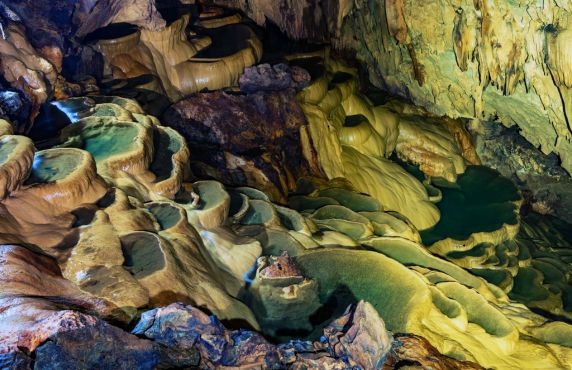
Explore Nam Tan Cave - The Most Beautiful Cave In Ha Giang

Thanh Son Village: Paper-making Craft Village In Ha Giang Vietnam
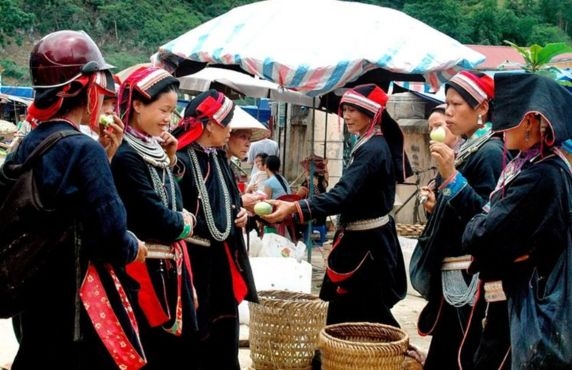
Yen Minh Market In Ha Giang: A Hidden Gem To Discover
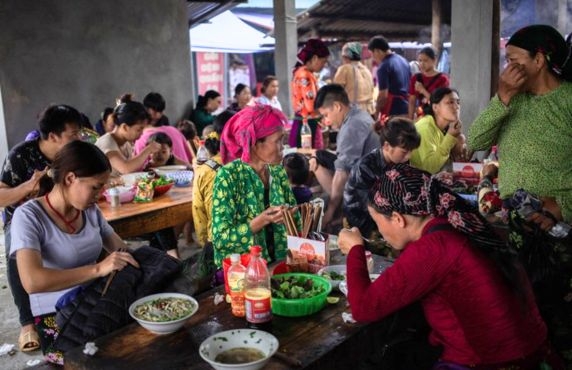
Discover Trang Kim Market With Its Specialties In Ha Giang

Visit Hoang Su Phi Market : The Oldest Ethnic Market In Ha Giang
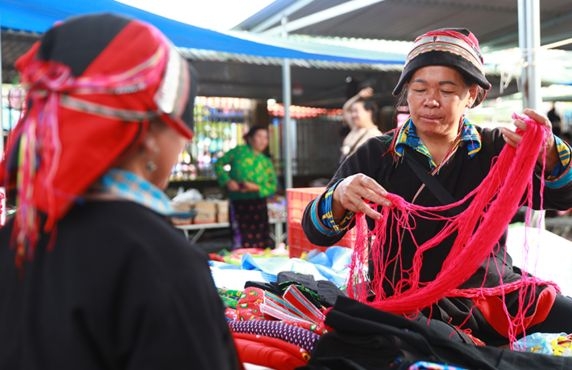
Quan Ba Market: A Must-Visit In Ha Giang, Northern Vietnam

Explore The Colorful Quyet Tien Market In Quan Ba, Ha Giang
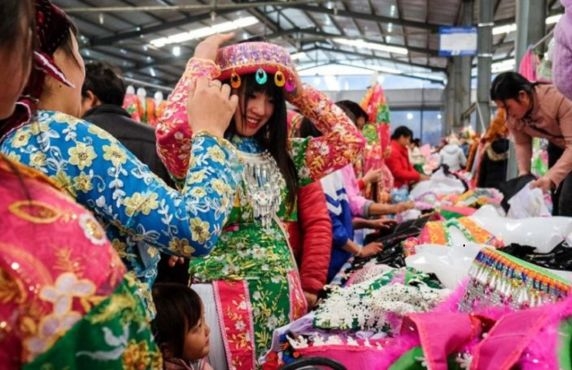
Meo Vac Market: Visit The Largest Ethnic Market In Ha Giang

Discover The Khau Vai Love Market In Meo Vac, Ha Giang
Filter Articles
- Mekong Delta
- Hanoi
- Halong Bay
- Cat Ba Island
- Ninh Binh
- Pu Luong
- Mai Chau
- Sapa
- Ha Giang
- Cao Bang
- Lang Son
- Bac Kan
- Yen Bai
- Son La
- Dien Bien
- Lai Chau
- Quang Binh
- Quang Tri
- Hue
- Da Nang
- Hoi An
- Quy Nhon
- Nha Trang
- Dalat
- Buon Ma Thuot
- Phan Thiet - Mui Ne
- Ho Chi Minh City
- Tay Ninh
- Tien Giang
- Ben Tre
- Can Tho
- Dong Thap
- Chau Doc - An Giang
- Phu Quoc Island
- Con Dao Island
- Community Activities
Most read
Autour Asia is highly recommended on
Embracing the mission of "Satisfied more than expected" and providing authentic experiences, we have received numerous recommendations on reputable travel forums:










